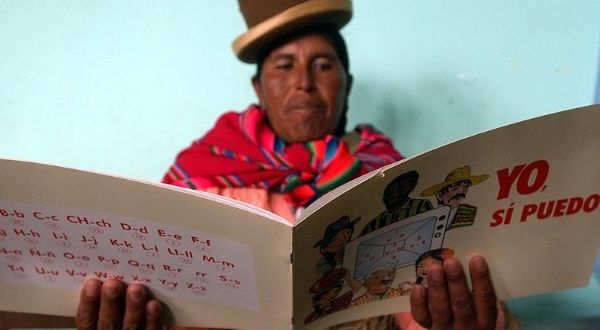Bolivia has an illiteracy rate of 2.68 percent, one of the lowest in the country’s history, said Héctor Ramiro Tolaba, director of the National Literacy Program, on the occasion of International Literacy Day, which will be celebrated tomorrow, Thursday.
“We continue to work for Bolivia to obtain the Declaration of Liberation from Illiteracy received in 2008 from the United Nations Educational, Scientific and Cultural Organization (Unesco),” Tolaba told reporters during an event held as part of the IX Olympiad of Knowledge of the Elderly-2022 “Intercultural Dialogue with our Sages,” whose national phase will be held tomorrow, Thursday, in La Paz.

In 2008, the illiteracy rate in Bolivia, recognized by UNESCO, was 3.77%.
According to the National Literacy Program, which depends on the Ministry of Education, in 2017, the lowest illiteracy rate in Bolivia’s history was recorded at 2.5%, an indicator that places the country above most South American countries and with which it has primarily met international agreements.
From 2006 to 2022, Bolivia taught 1,066,076 people over 15 to read and write, 66 percent of whom were women.
Tolaba explained that literacy in Bolivia should contribute to gender equality, eradicating extreme poverty, creating productive capacity, and enjoying civil rights.
He recalled that the illiteracy rate in Bolivia was 13.28 percent in 2001, which means that 10.6 percentage points have reduced this indicator in the last 20 years.
The official attributed this result to the national literacy program “Yo sí Puedo” (Yes, I can), launched in 2006 to reduce illiteracy rates among youth and adults over the age of 15.
The national government is currently working to reduce the number of “illiterates and functional illiterates” through literacy and post-literacy programs, Tolaba said.
“We are committed to ensuring that people who have completed literacy continue their education at the post-literacy level, which is equivalent to the primary level so that they can consolidate their literacy skills and not fall back into functional illiteracy,” he said.

